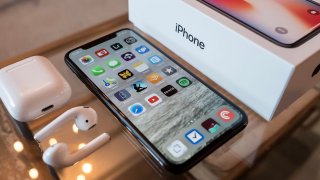Apple Seems Set to Launch 5G iPhones This Year. But What Kind of 5G Service Will You get?
Apple, later this year, is widely expected to release its first-ever line of 5G iPhones. The line is expected to feature four models, in four different sizes, all with OLED screens, as small as 5.4 inches and as large as 6.67. The question is, what kind of 5G capability will the new iPhones have?
Apple, later this year, is widely expected to release its first-ever line of 5G iPhones. The line is expected to feature four models, in four different sizes, all with OLED screens, as small as 5.4 inches and as large as 6.67.
The question is, what kind of 5G capability will the new iPhones have?
A Digitimes report earlier this week, which was cited throughout the tech media, stated that “Apple's 2020 series of iPhones will work on both sub-6GHz and millimeter wave 5G networks, and the vendor is considering introducing its iPhones supporting either mmWave or sub-6GHz for specific markets next year.” Digitimes’ report cited “industry sources in Taiwan.”
Earlier reports, however, have suggested that mmWave might only be turned on in some countries for this year’s iPhones. Other reporting had indicated that perhaps two of the 2020 iPhones would have the sub-6GHz capability, with the two other models working with both.
What’s the difference between the two kinds of 5G?
According to RootMetrics, “both sub-6 GHz and mmWave spectrum should, in theory, provide much faster speeds compared to 4G LTE, mmWave technology offers the potential to deliver lightning-fast speeds theoretically as high as 5.0 Gbps or faster, compared to 100 to 200 Mbps for existing 4G LTE services.”
mmWave technology is supposed to be faster, although questions have been raised over the signals being blocked by walls and windows.
AT&T announced Thursday that its 5G network has now been deployed nationwide, which per FCC guidelines cited by Engadget, means that it is available to more than 200 million people nationwide. The company has deployed both sub-6 (5G) and mmWave (which it calls 5G+), although its network and that of T-Mobile are based primarily on the sub-6 standard, while Verizon’s network, which has been deployed in fewer places, is based mostly on mmWave.
“Our strategy of deploying 5G in both sub-6 (5G) and mmWave (5G+) spectrum bands will provide the best mix of speeds, latency and coverage that are needed to enable revolutionary new capabilities to fuel 5G experiences for consumers and businesses,” Chris Sambar, EVP of Technology Operations, said in a statement.
AT&T also announced its earnings Thursday, and said that it once again lost nearly a million subscribers to DirecTV and its other pay TV services.
Stephen Silver, a technology writer for The National Interest, is a journalist, essayist and film critic, who is also a contributor to Philly Voice, Philadelphia Weekly, the Jewish Telegraphic Agency, Living Life Fearless, Backstage magazine, Broad Street Review and Splice Today. The co-founder of the Philadelphia Film Critics Circle, Stephen lives in suburban Philadelphia with his wife and two sons. Follow him on Twitter at @StephenSilver.

